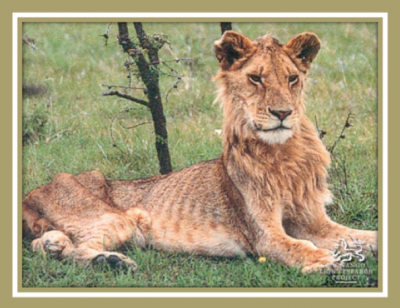News
Latest Lion Aid News
Lion stronghold populations increasingly threatened by disease
Tuesday 24th February 2015
|
Once introduced, now a resident hazard
With an ever-decreasing population of lions remaining in Africa, and few efforts being undertaken to effectively address the reasons for their decline, I would like to stress again the considerable threat of disease. Last August, I wrote a short piece about disease threats to lions. I mentioned there that “An understanding of the epidemiology of diseases in wild animals is crucial to informed conservation management. Much more attention needs to be paid.” Two recent scientific journal articles on the epidemiology of diseases likely to negatively affect lion populations in Tanzania and South Africa came to my attention in this regard. The first, published by Miller and co-authors in the Journal of Wildlife Diseases confirms what had been suspected all along – lions infected with Bovine tuberculosis (BTb) in Kruger National Park in South Africa are likely to transmit the inevitably fatal disease among themselves. Initially the infection came from domestic cattle, then went into Kruger Park buffalos, and via them into lions. The Kruger Park lion population is only one of five in Africa considered to be a stronghold and future hope for the survival of the species. The second, published by Viana and co-authors in the Proceedings of the National Academy of Sciences of the USA discusses threats of canine distemper virus (CDV) to lion populations in the Serengeti region of Tanzania, another lion population stronghold. An outbreak of CDV in 1994 killed over 1,000 lions in the ecosystem. CDV actually has a very broad host range, although the 1994 outbreak was identified to have originated from domestic dogs in villages surrounding the Serengeti. A domestic dog vaccination program was subsequently initiated, but the virus persisted among wild carnivores. Viana et al evaluated the recent outbreaks, and showed that increasingly such occurrences were decoupled from domestic dog populations. In other words, CDV in the Serengeti ecosystem has now become established, and is likely propagated by, wild carnivores in addition to domestic dogs. Both studies show that disease threats to wild carnivore populations cannot be underestimated. CDV and BTb have become established among lions after initial introductions from domestic animals and are now a resident hazard to at least two of the largest remaining African lion populations. Yet another reason why we should never tread lightly where future conservation of lions is concerned – we need to be aware of all threats as populations dwindle.
Tags: lions, Btb, CDV, Kruger National Park, Serengeti, buffalos, domestic dogs, disease Categories: Events/Fundraising, Traditional Medicine, Domesticating Animals, Wildlife Diseases |
Posted by Chris Macsween at 10:58
No comments have been posted yet.
Add a new comment
Existing user
New user sign up




